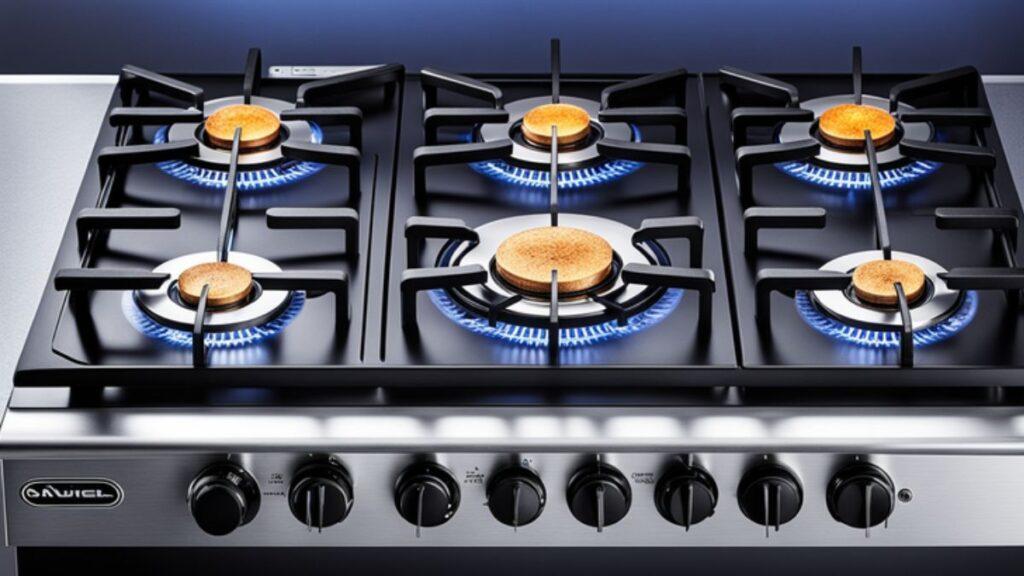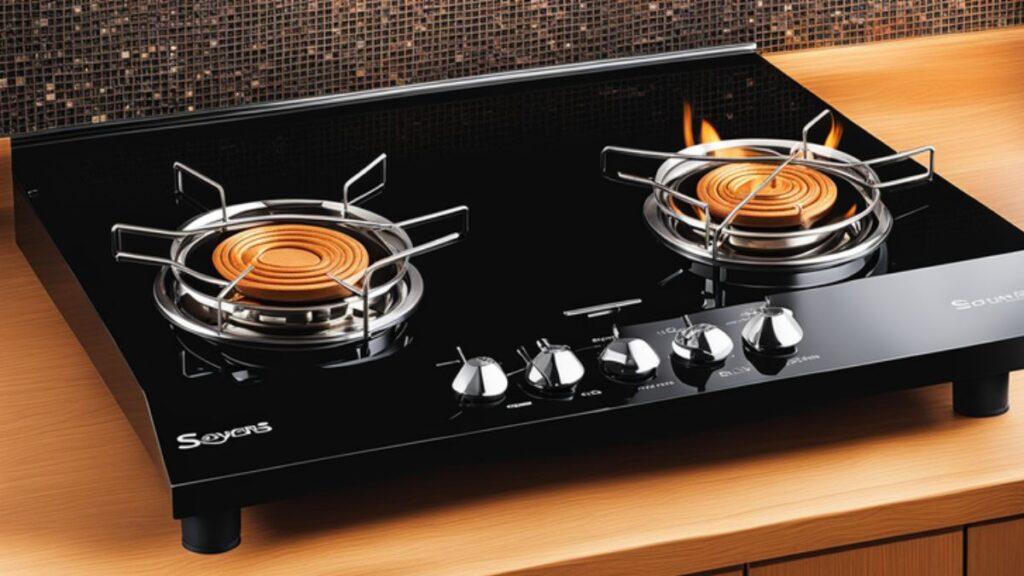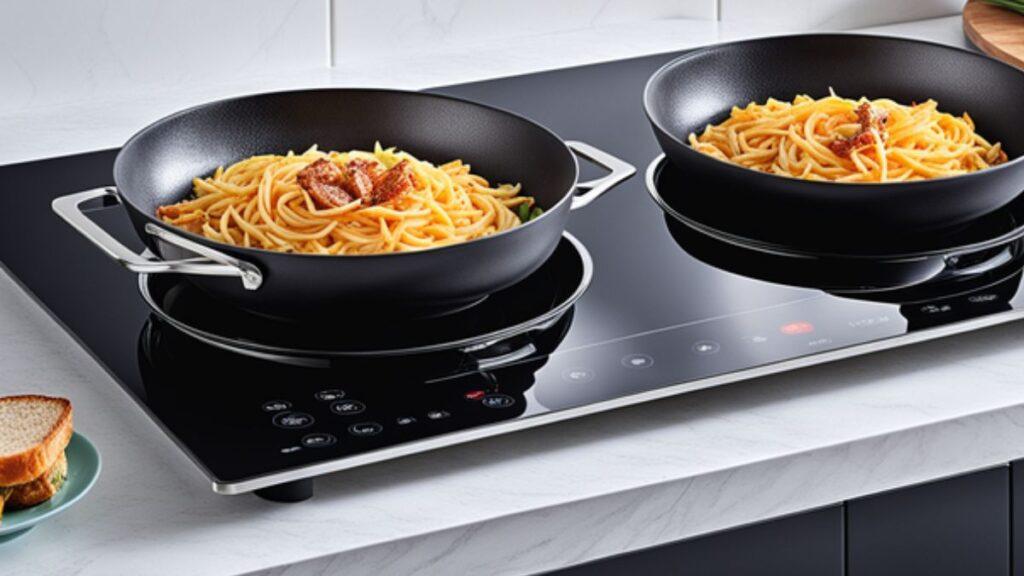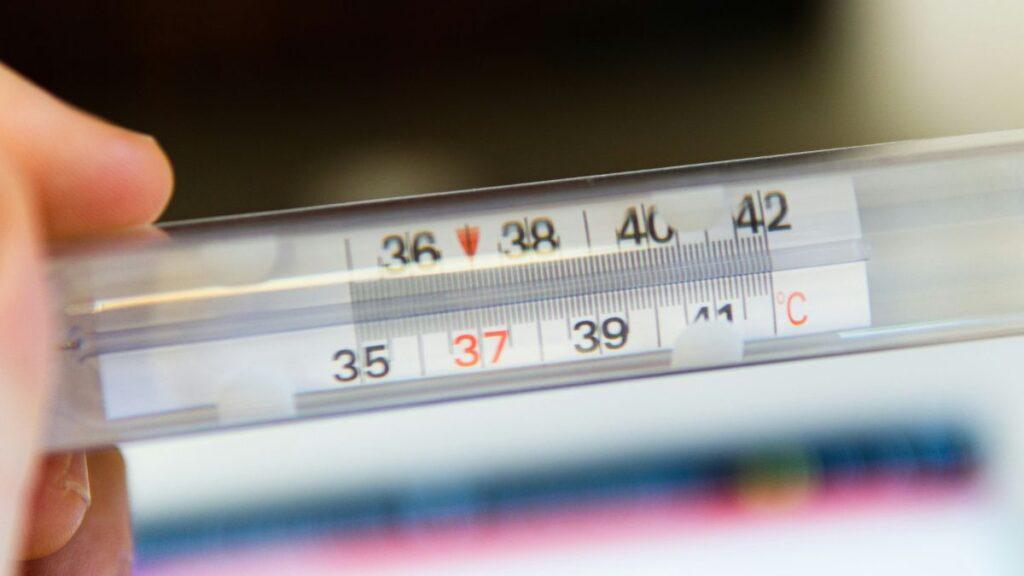
We may earn money or products from the companies mentioned in this post.
A stove burner can reach temperatures up to 3,000 degrees Fahrenheit when on the highest setting. Electric burners typically heat up to around 1,500 degrees Fahrenheit.
Cooking at home revolves around the use of your stove, an essential kitchen appliance that brings heat to your favorite recipes. The heat generated by a stove burner varies depending on the type and model. For the culinary enthusiast or home chef, understanding these temperatures can transform cooking practices, ensuring that you achieve the perfect sear on a steak or avoid burning delicate sauces.
With safety always in mind, one should also be mindful that the higher temperature ranges demand caution and appropriate cookware. Reliable stove operation and consistent heat output are key to refining cooking techniques, making the stove’s potential heat level a primary consideration when preparing a diverse array of dishes.
Reed: Unleash Culinary Excellence: Top 6 Pots and Pans for Gas Stoves

Credit: build.com.pk
The Science Of Stove Heating
The context of stove heating combines physics, engineering, and culinary arts. It’s an intriguing mix of science and practicality. Let’s delve deeper into this captivating theme. Learn how heat is transferred from a stove burner to your cooking pan, heating up your food to the perfect temperature.
Composition Of Stove Burners
Stove burners aren’t as simple as they seem. Their design plays a crucial role in their function. Let’s hover over its main elements.
- Heat Source: This can be gas, electricity, or induction.
- Material: Often made from materials that are good heat conductors like iron or copper.
Different burners heat at different rates depending on these factors. It’s one reason why cooking times may vary.
Measuring Heat Output
Did you know that a stove’s heat output is not measured in degrees? Surprised? Let’s get the facts straight.BTUs: Gase stoves use British Thermal Units (BTUs) for heat measurement. A typical gas burner might have 7000 BTUs.Watts: Electric stoves measure in watts. An average electric stove burner can operate at 1500 watts.
Understanding these units helps to gauge your stove’s efficiency and power. Now you’re better equipped to control your cooking temperature.
Types Of Stove Burners

Let’s delve a bit deeper into the world of kitchen technology by exploring the Types of Stove Burners used globally. Enjoy understanding traditional gas, electric coil, and induction burners. Each type carries unique features, and knowing them can guide a wise choice for your kitchen.
Traditional Gas Burners

A staple in most kitchens, Traditional Gas Burners provide control and versatility. This style of burner uses either natural gas or propane. Rapid heat production and easy temperature adjustments underline its appeal.
Gas burners typically reach temperatures up to 2000 degrees Fahrenheit (1093 Celsius).
Electric Coil Burners

Electric Coil Burners are another popular pick. These burners use electric power, transforming it into heat through resistant coils. These elements glow a beautiful red upon reaching high temperatures.
Electric Coil Burners usually achieve heat levels close to 1500 degrees Fahrenheit (816 Celsius).
Induction Stove Burners

Induction Stove Burners use a novel method to cook. They generate heat by creating a magnetic field, heating the cookware directly. It results in less wasted heat and quicker cooking times.
Induction burners tend to top out at about 500 degrees Fahrenheit (260 Celsius).
Now with a fuller understanding of stove burners, each one holds strengths for different cooking needs. Reflecting on your personal needs and wishes will lead to the best choice for your kitchen.
Temperature Ranges

When cooking, knowing the heat your stove burner generates is crucial. Different stove types reach various temperatures that suit distinct cooking needs. Explore how hot each stove burner gets and what it means for your kitchen craft.
Gas Burner Temperatures
Gas burners provide instant heat with an easy-to-adjust flame. Here are typical temperature ranges:
- Low heat: around 140°F to 170°F – ideal for simmering sauces.
- Medium heat: about 325°F to 375°F – great for frying and sautéing.
- High heat: can reach up to 500°F or more – perfect for searing meat.
Electric Burner Temperatures
Electric burners take longer to heat up and cool down. But they offer consistent temperatures. See their heat levels:
| Heat Setting | Temperature |
|---|---|
| Low | around 200°F |
| Medium | between 300°F to 400°F |
| High | up to 600°F or more |
Induction Heat Levels
Induction cooktops use magnetic fields to generate heat directly in the cookware. They offer precise control over heat levels:
- Low: perfect for delicate tasks like melting chocolate.
- Medium: cooks evenly for tasks like baking or roasting.
- High: boils water quickly due to rapid temperature rise.
Reed: How Hot Can an Electric Stove Burner Coil Get: Sizzling Facts!
Factors Affecting Burner Temperature
Understanding how hot a stove burner gets involves looking at various factors. Different elements influence the temperature. It’s not just about the flame or the setting. Below we dive into the aspects that determine how much heat your stove burner produces.
Material And Design
The construction of a burner plays a crucial role in its heat capacity. Materials conduct heat differently. For instance:
- Coil burners – Slow to heat, with consistent temperature distribution.
- Gas burners – They heat quickly but can have uneven temperatures.
- Induction burners – Fast and even heating due to electromagnetic activity.
Design features, like burner size and shape, also affect heat distribution.
Control Settings
Stove temperature adjustment is key. It ranges from low to high with various levels in between. Each setting dictates the intensity of the heat. For example:
| Setting | Typical Temperature |
|---|---|
| Low | Simmer at around 140°F |
| Medium | Cook at 210°F to 300°F |
| High | Searing and boiling at 460°F+ |
Ambient Temperature Impact
Ambient temperature affects how your stove burner heats. In a chilly environment, the burner works harder to reach the desired temperature. Conversely, in a warmer setting, the burner may heat up faster.
Reed: Can Induction Cookware Be Used on Gas Stove: Ultimate Guide
Safety And Efficiency
| Stove burners reach high temperatures. Being safe and efficient is crucial. Let’s explore the steps to ensure both. |
| Maximizing Energy SavingsMatch Pots: Use pots fitting the burner size to prevent heat loss. Lessen Preheat Times: Only preheat when needed to save energy. |
| Proper MaintenanceClean Regularly: A clean stove functions better, so tidy it often. Repair Promptly: Fix faulty parts fast to maintain stove efficiency. |
| Proper MaintenanceClean Regularly: A clean stove functions better, so tidy it often.Repair Promptly: Fix faulty parts fast to maintain stove efficiency. |
Frequently Asked Questions For How Hot Does A Stove Burner Get
How Hot Does Gas Stove Burner Get?
What Is 400 Degrees On A Stove Top?
What Is The Temperature Range Of A Burner?
What Is 165 Degrees On A Stove?
Conclusion
Understanding the temperature range of stove burners is crucial for safe and successful cooking. To recap, burners can hit temperatures as high as 2000 degrees Fahrenheit when utilized to their fullest capacity. Whether it’s searing a steak or slowly simmering soup, knowing your stove’s heat capabilities can certainly enhance your culinary exploits.
Stay safe and enjoy your cooking journey!






